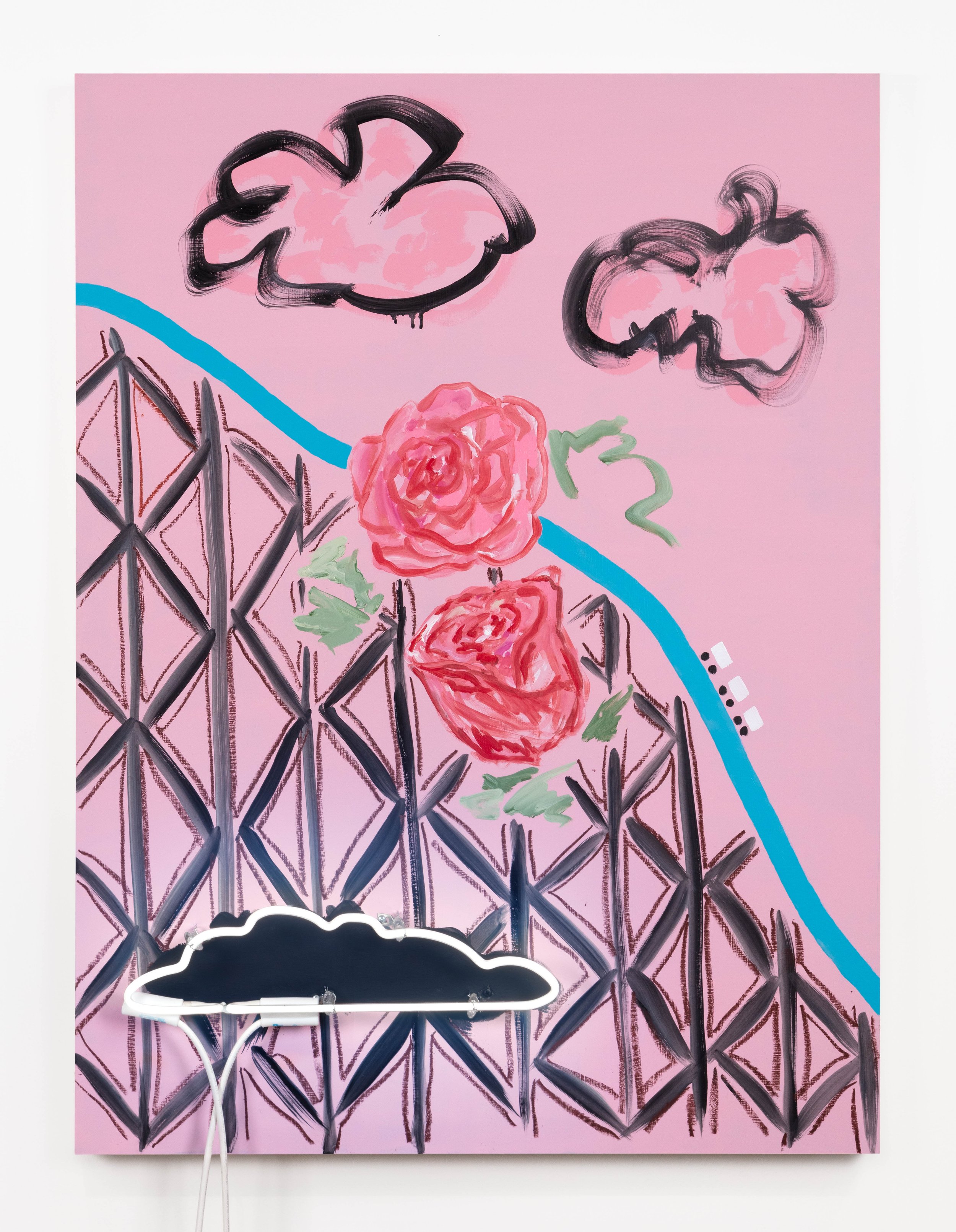Brake Run Helix
MASS MoCA
North Adams, Massachusetts
October 30, 2022 – January 2024
Photo: Kaelan Burkett (unless otherwise noted)
EJ Hill has been obsessed with roller coasters from a young age. He recalls, “When I was little, I had these notebooks and they’d all be covered with roller coaster drawings. This image has always shown up, time and time again: this idea of the up and down and the round and round of a closed circuit.” At the heart of Brake Run Helix is Hill’s first rideable roller coaster, Brava!. Taking center stage in front of a three-story velvet curtain, Brava! is surrounded by a group of artworks that riff on the forms and functions of amusement rides. For Hill, roller coasters in particular are public monuments to the possibility of attaining joy—which, as he notes, is “a critical component of social equity.”
Roller coasters began in 18th-century Russia as ice slides, commissioned by and for the empire’s upper classes. Over the course of the 1800s and 1900s, they became widely-popular permanent attractions throughout Europe and the United States. During the Jim Crow era in the US, however, Black Americans were systematically barred access to theme parks, as well as other recreational venues including swimming pools, parks, and skating rinks. Following the 1964 Civil Rights Act, which desegregated public accommodations, many amusement parks were privatized. They became increasingly economically inaccessible as owners moved them further from cities’ public transit systems, and shifted from per-ride ticketing to higher flat entrance fees–a structure similar to many museums. And yet, roller coasters have retained their original, hopeful purpose: they are one of the only architectural forms designed for the sole purpose of offering experiences of terror-streaked delight.
Brake Run Helix exists alongside the tension between histories of hindered access to roller coasters and the rides’ central, joyful purpose–urging towards a future where leisure and joy are widely accessible.
—MASS MoCA (October 2022)


















